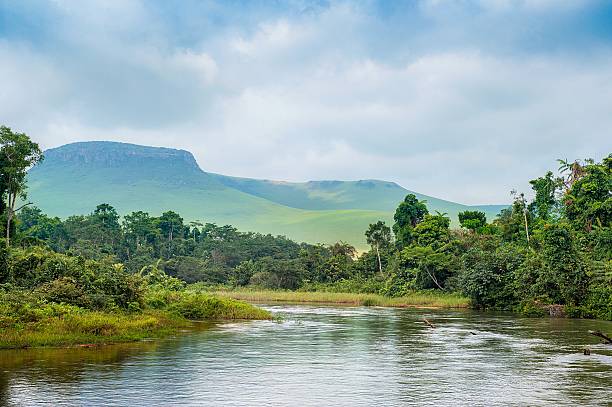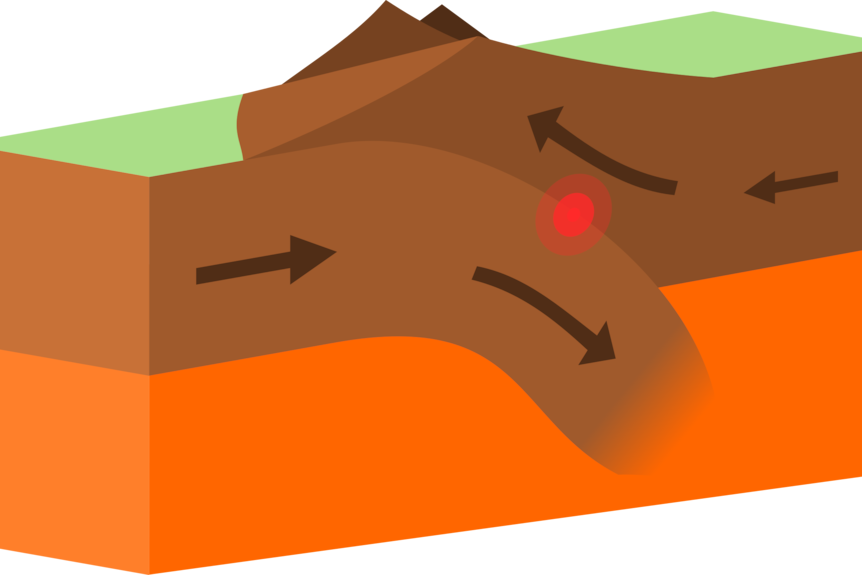In the dusty annals of human prehistory, there has long been a prevailing tale: that the drying of northern Africa millions of years ago transformed lush savannas into arid landscapes, pushing our early ancestors to stand upright, adapt, and eventually evolve into the species we are today. But a new study led by researchers from Brown University is rewriting that story—and it begins not with bones or stone tools, but with wax.
Published in the journal Science Advances, this new research offers a striking revision to our understanding of African climate history during the critical window between 3.5 and 2.5 million years ago—a time known as the Pliocene-Pleistocene transition. This period has long been viewed as a climatic turning point when global temperatures dropped, ice sheets became permanent fixtures on Greenland, and Africa’s summer rains faded, giving rise to expanding deserts and perhaps even sparking key developments in human evolution.
But according to the Brown University team, the summer monsoons that water northern Africa held surprisingly steady, defying earlier narratives that linked falling precipitation to evolutionary leaps.
A Molecular Time Machine Hidden in Sediment
The key to this new understanding lies in molecules left behind by ancient plants. Specifically, the researchers focused on leaf waxes—a protective coating plants secrete during their growing seasons to retain moisture. These waxes, long buried in ocean sediments off the West African coast, are like time capsules. They carry with them hydrogen isotopic fingerprints that reveal the nature of rainfall at the time the plants grew.
“Plants produce these waxes during the summer growing season,” said Bryce Mitsunaga, the study’s lead author and a postdoctoral researcher at Harvard who conducted the research while completing his Ph.D. at Brown. “So they provide a direct signal of summer rainfall over time.”
The brilliance of this approach lies in its specificity. While earlier studies had relied on dust particles found in the same sediment cores to infer climate changes, these particles are indirect and open to interpretation. More dust was seen as more desert, and more desert meant less rain. But dust can be carried and deposited by changing wind patterns—not just by changes in precipitation.
Leaf waxes, on the other hand, tell a more grounded story—literally. They preserve the ratio of light to heavy hydrogen in the rainwater that nourished the plants. Since heavier hydrogen molecules fall to the ground first during rainfall, a higher ratio of lighter hydrogen in waxes suggests more sustained rain over time.
The leaf wax data stunned researchers: no significant trend toward drying during the Pliocene-Pleistocene transition. Despite the world getting cooler and ice masses growing across the Northern Hemisphere, Africa’s rainfall patterns didn’t seem to flinch.
Shaking the Foundations of Evolutionary Theory
This discovery doesn’t just tweak a few climate graphs—it rattles the scaffolding of one of the most widely accepted ideas in human evolution.
For decades, scientists have speculated that the drying of Africa, particularly the expansion of the Sahara Desert and the retreat of woodlands, catalyzed major behavioral and anatomical changes in early hominins. The appearance of upright-walking ancestors such as Homo habilis and Paranthropus between 3 and 2.5 million years ago was often linked to this environmental transformation. According to the theory, as forests gave way to open savanna, early humans were forced to forage in more exposed terrain, giving natural selection a push toward bipedal locomotion and new adaptive strategies.
But this new study complicates that tidy narrative.
“If there wasn’t a major drying event at that time, then we need to rethink how environmental pressures were shaping human evolution,” said Jim Russell, a Brown University geologist and senior author of the study. “This calls for new research to determine when and why African climate and environments transitioned to a drier state—and new theories to understand our ancestry.”
In other words, if the landscape didn’t change as dramatically as once believed, then perhaps it wasn’t the environment that triggered early human adaptations—or at least, not in the way we imagined.
Dust in the Wind, But Not in the Rain
So how did earlier researchers get it wrong? The culprit, it seems, is dust.
Previous studies focused on dust accumulation in deep-sea sediment cores as a proxy for climate. Around 3.5 to 2.5 million years ago, dust levels off the West African coast increased dramatically, leading to the widely held conclusion that Africa had dried out.
But Mitsunaga and his team argue that the dust didn’t necessarily mean less rain. Instead, it may have reflected changes in wind patterns or intensity—perhaps the result of shifting ocean currents, atmospheric circulation, or even regional topography.
“It’s not that the dust data were wrong,” Mitsunaga said. “But it turns out that dust can be a misleading indicator for rainfall, especially if you’re not accounting for how atmospheric circulation can change where and how dust is carried.”
The takeaway is clear: in climate science, the proxy you choose matters, especially when reconstructing events from millions of years ago. Dust might tell one story, but plant waxes—drawn from terrestrial life, not air currents—can offer a more intimate and accurate view of rainfall and ecology.
Echoes from the Deep Past for a Warming Future
Beyond its evolutionary implications, this study carries weighty relevance for our present and future.
The Pliocene-Pleistocene transition occurred under atmospheric carbon dioxide levels similar to those today, though they were decreasing then and are rising now. Understanding how rainfall patterns behaved in a warming or cooling world with similar CO₂ levels can help refine predictions about what may happen to already water-stressed regions like northern Africa in the years to come.
“If we can see how global climate influenced what the water cycle was doing at that point in history,” Mitsunaga said, “it could inform predictions of the future rainfall in this already water-stressed region.”
In a time when climate change is reshaping weather, agriculture, migration, and geopolitics across the globe, understanding the nuances of the Earth’s climate engine is not just academic—it’s essential.
A Mystery Reopened, and a Legacy Revised
The findings from Brown University don’t offer all the answers. Instead, they reopen an ancient mystery, challenge a powerful evolutionary hypothesis, and remind us that even the most entrenched scientific stories can be rewritten with better tools, better questions, and a willingness to look again.
Far from diminishing the role of climate in our species’ story, this new research enriches it. It suggests that our ancestors evolved not just in response to a drying world, but perhaps amid a more complex and stable climate than we imagined. And that forces beyond simple cause-and-effect—ecological pressures, biological innovation, and yes, perhaps even luck—wove the tapestry of our emergence.
As researchers continue to dig into sediments, analyze molecules, and peer deeper into the past, one thing is clear: the story of human origins is still unfolding, and it’s more intricate—and more fascinating—than we ever dreamed.
Reference: Bryce Mitsunaga, Fundamentally unchanged northwestern African rainfall regimes across the Plio-Pleistocene transition, Science Advances (2025). DOI: 10.1126/sciadv.ads3149. www.science.org/doi/10.1126/sciadv.ads3149






